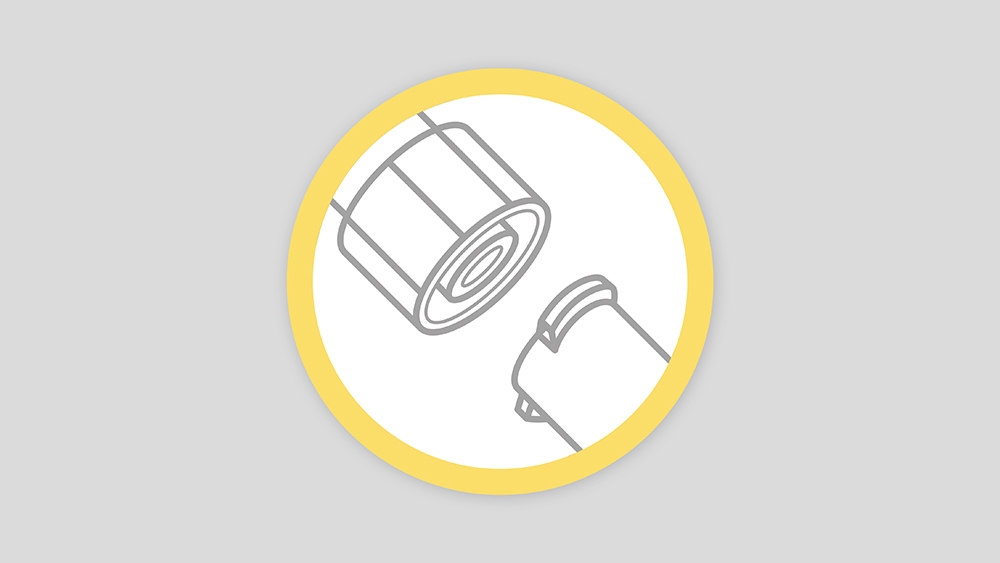You have successfully logged out.
Not registered yet?
Medication error
Minimising Risk
"A medication error is any event that may cause or lead to inappropriate medication use or patient harm while the medication is in the control of the health care professional, patient, or consumer. Such events may be related to professional practice, health care products, procedures, and systems, including prescribing, order communication, product labeling, packaging, and nomenclature, compounding, dispensing, distribution, administration, education, monitoring, and use."1
One in 20 perioperative medication administrations includes a medication error and/or adverse drug event.2
Causes of medication errors
Parenteral medication errors are a serious safety problem in Intensive Care Units (ICU) and are recognised as a high priority health care issue across national borders, different ICU-settings and health care systems.3,4,5 Errors have been shown to be associated with additional morbidity and mortality in an already critically ill population.6,7
The majority of medication errors do not occur in emergency situations but while performing routine clinical tasks.5 The source of these errors can lie at any stage of the process from the initial prescription of an infusion to its administration.8 This is a complex process9,12 and can lead to a wide range of different errors.10,11,12,13,14,15
Causes of medication error and resulting medication incident types. 10-15
| Wrong dose | Wrong patient | Wrong drug | Wrong route | Wrong time | Wrong flowrate | Omitted dose | Side effects | Infections | |
| Wrong transcription | x | x | x | x | x | x | x | ||
| Incorrect labeling | x | x | x | x | x | x | x | ||
| Wrong calculation | x | x | x | x | |||||
| Difficult preparation technologies | x | ||||||||
| Incomplete container delivery | x | ||||||||
| Adsorption (container/TV sets) | x | ||||||||
| Incorrect flow rate | x | x | |||||||
| Insufficiant mixing ingredients | x | ||||||||
| Incompatibilities | x | ||||||||
| Use of inappropriate diluents | x | x | |||||||
| Contamination of solutions | x | x | x | ||||||
| Wrong storage | x | x | |||||||
| Wrong/omitted/passed expiry date | x | x |
The seminal study by Wilson et al. found that human error was a significant factor. The majority (81%) of adverse events in their study were associated with one or more human factors, such as lack of knowledge, care or attention.16 Of the events that were considered highly preventable, less than 1% were not associated with human error.13
There are the main causes which increase the incidence of medication error3:
- nurse’s workload (patient to nurse ratio, occupancy rate, ratio of beds per nurses
- size of unit (complexity of organization)
- look alike / sound alike drug labels and names.
Interruption of nurses during the drug preparation process increases the risk for medication errors17.
Health consequences of medication errors
Since the early70s more and more studies of the quantity of parenteral medication errors have been published.5 The National Patient Safety Agency in the United Kingdom has compiled figures showing the type of medication error incidents that actually occur. More than 14,000 injectable medicine incident reports during 15 months were evaluated.18 It was found that in more than 4,107 cases (28.9% of total) the most frequent medication error was wrong dose, strength or frequency of the prescribed drug.
Errors and irregularities in IV drug preparation can have a broad range of consequences ranging from harmless to serious to fatal. The severity depends on the drug in use and the specific factors of each individual case.
In England medication errors are associated with
-
Costs of GBP
= 0
per year
-
Occupation of
= 0
bed-days per year
-
Deaths
= 0
per year 19
The financial costs of adverse events, in terms of additional treatment and extra days in hospitals, are considerable. Studies suggest that treatment costs were higher among patients with medication errors than those without. Treatment costs attributable to medication errors are $8,439 to $8,898 per case.20
Research in Australia showed that total costs of adverse events represent 15.7% of the total expenditure on direct hospital costs.21
Other significant damages associated with adverse events are the human ones: the harm suffered by the patient. Patients experiencing an adverse event are 4-7 times more likely to die than those who do not.22
Vincent et al. found that 19% of adverse events result in moderate physical impairment, 6% in permanent impairment and 8% in death.22
Costs per medication error can reach 111,727 EUR23.
Preventive Strategies helping to minimise medication errors
To minimise medication error, it is important to combine product and organisational measures.
The more successive safety checks that are added, the safer the whole system becomes. Some concrete preventive strategies to implement in clinical routine are described in the Figure below.
Examples to prevent medication error

Product Measure
Product Measure
Standard concentrations pre-prepared by pharmacy or industry24,25,26,27
Product Measure
Product Measure
Label/Color Code Concept28,29 and a Barcode/Data Matrix to handle preparation data and close the loop to patient30
Product Measure
Product Measure
IV pumps with intuitive handling and integrated drug database36,31,32 additionally, compatibility databases33
Organizational Measures
Organizational Measures
Comprehensive and interprofessional education and training of all involved staff 29,30,36,34,35 as well as ward-based clinical pharmacists36,37
Organizational Measures
Organizational Measures
Organizational Measures: Different storage areas for important drugs (e.g. concentrated potassium chloride)38 and introduction of separate medication preparation rooms on ward39
Organizational Measures
Organizational Measures
Incident reporting system36,42,40
Moreover, it must be the aim of every employee in the health care sector, to ensure the 9 “Rights“.41, 42
| 9 Rights of Effective Prevention | ||
| Right patient | Right time | Right action |
| Right drug | Right dose | Right form |
| Right route | Right documentation | Right response |
Connecting what belong together
Approximately 14 percent of drug errors involve route of administration, with the Luer connector being a key causal factor. Research shows that patients with multiple access systems are at greater risk of misconnection.43 With NRFit®, you only put together what belongs together. For greater safety in regional anesthesia.
Connecting what belongs together NRFit®


At eye-level with tiny giants
Young patients certainly belong to one of the most challenging patient groups. Learn more about handling the high risk of error caused by their special anatomy, minimum tolerance ranges, and less patient compliance.
Care for pediatric & neonatal patientsCurrent guidelines an recommendations
Scientific Evidence
[1] National Coordinating Council for Medication Error Reporting and Prevention. About Medication Errors. Available from: https://www.nccmerp.org/about-medication-errors (accessed 20 Dec, 2022)
[2] Nanji KC, Patel A, Shaikh S, Seger DL, Bates DW. Evaluation of Perioperative Medication Errors and Adverse Drug Events. Anesthesiology. 2016 Jan;124(1):25-34.
[3] Döring M, Brenner B, Handgretinger R, Hofbeck M, Kerst G. (2014) Inadvertent intravenous administration of maternal breast milk in a six-week-old infant: a case report and review oft he literature. BMC Res Notes; 7:17
[4] Manias E, Kinney S, Cranswick N, Williams A, Borrott N. (2014) Interventions to reduce medication errors in pediatric intensive care. Ann Pharmacother; 48(10): 1313-31
[5] Valentin A, Capuzzo M, Guidet B, Moreno RP, Dolanski L, Bauer P, Metnitz PG; Research Group on Quality Improvement of European Society of Intensive Care Medicine; Sentinel Events Evaluation Study Investigators. (2006) Patient safety in intensive care: results from the multinational Sentinel Events Evaluation (SEE) study. Intensive Care Med; 32(10): 1591-8
[6] JCAHO. (2014) Tubing misconnections - a persistent and potentially deadly occurrence. Joint Commission on Accreditation of Healthcare Organizations, USA. Sentinel Event Alert; 53: 1-3.
[7] Simmons D, Symes L, Graves K. (2011) Tubing misconnections: normalization of deviance. Nutrition in Clinical Practice; 26(3): 286-293.
[8] McDowell S, Mt-Isa S, Ashby D (2010) Where errors occur in the preparation and administration of intravenous medicines: a systematic review and Bayesian analysis. Qual Saf Health Care; 19(4): 341-5
[9] Fraind DB, Slagle JM, Tubbesing VA, Hughes SA, Weinger MB (2002) Reengineering intravenous drug and fluid administration processes in the operating room: step one: task analysis of existing processes. Anesthesiology; 97(1): 139-47.
[10] Fahimi F, Ariapanah P, Faizi M, Shafaghi B, Namdar R, Ardakani MT (2008) Errors in preparation and administration of intravenous medications in the intensive care unit of a teaching hospital: an observational study. Aust Crit Care; 21(2): 110-6.
[11] Ferner RE, Langford NJ, Anton C, Hutchings A, Bateman DN, Routledge PA (2001) Random and systematic medication errors in routine clinical practice: a multicentre study of infusions, using acetylcysteine as an example. Br J Clin Pharmacol; 52(5): 573-7.
[12] Garnerin P, Pellet-Meier B, Chopard P, Perneger T, Bonnabry P (2007) Measuring human-error probabilities in drug preparation: a pilot simulation study. Eur J Clin Pharmacol; 63(8): 769-76
[13] Parshuram CS, To T, Seto W, Trope A, Koren G, Laupacis A (2008) Systematic evaluation of errors occurring during the preparation of intravenous medication. CMAJ; 178(1): 42-8.
[14] Cousins DH, Sabatier B, Begue D, Schmitt C, Hoppe-Tichy T (2005) Medication errors in intravenous drug preparation and administration: a multicentre audit in the UK, Germany and France. Qual Saf Health Care; 14(3): 190-5.
[15] Cohen H, Robins ES, Mandrack M (2003) Getting to the root of medication errors: Survey results. Nursing; 33(9): 36-45.
[16] Wilson RMcL, Harrison BT, Gibberd RW, Hamilton JD (1999) An analysis of the causes of adverse events from the Quality in Australian Health Care Study. Med J Aust; 170(9): 411-5.
[17] Johnson M, Sanchez P, Langdon R, Manias E, Levett-Jones T, Weidemann G, Aguilar V, Everett B. The impact of interruptions on medication errors in hospitals: an observational study of nurses. J Nurs Manag. 2017 Oct;25(7):498-507.
[18] National Patient Safety Agency. (2008). The National Patient Safety Agency annual report and accounts 2007 to 2008. London: The Stationery Office.
[19] Elliott RA, Camacho E, Jankovic D, Sculpher MJ, Faria R. Economic analysis of the prevalence and clinical and economic burden of medication error in England. BMJ Qual Saf. 2021 Feb;30(2):96-105.
[20] Choi I, Lee SM, Flynn L, Kim CM, Lee S, Kim NK, Suh DC. Incidence and treatment costs attributable to medication errors in hospitalized patients. Res Social Adm Pharm. 2016 May-Jun;12(3):428-37.
[21] Ehsani J, Jackson T, Duckett S (2006) The incidence and cost of adverse events in Victorian hospitals 2003-2004. Med J Aust 184(11): 551-55 www.ncbi.nlm.nih.gov/pubmed/16768660
[22] Vincent C, Taylor-Adams S, Chapman EJ et al. (2000) How to investigate and analyse clinical incidents: clinical risk unit and association of litigation and risk management protocol. BMJ; 320(7237): 777-81.
[23] Walsh EK, Hansen CR, Sahm LJ, Kearney PM, Doherty E, Bradley CP. Economic impact of medication error: a systematic review. Pharmacoepidemiol Drug Saf. 2017 May;26(5):481-497.
[24] Parshuram CS, To T, Seto W, Trope A, Koren G, Laupacis A (2008) Systematic evaluation of errors occurring during the preparation of intravenous medication. CMAJ; 178(1): 42-8.
[25] Cousins DH, Sabatier B, Begue D, Schmitt C, Hoppe-Tichy T (2005) Medication errors in intravenous drug preparation and administration: a multicentre audit in the UK, Germany and France. Qual Saf Health Care; 14(3): 190-5.
[26] Taxis K, Barber N,(2003) Etnographic study of incidence and serverity of intravenoius drug errors.BMJ 326:684
[27] Dehmel C, Braune S, Keymann G, Baehr M, Langebrake C, Hilgarth H, Nierhaus A, Dartsch D, Kluge S (2011) Do centrallly pre-pared solutions achieve more reliable drug concentrations than solutions prepared on the ward? Intensive Care Med 2010-00231. R3 in press
[28] Tissot E. Cornette C, Limat S, Maourand J, Becker M, Etievent J et al. (2003) Observational study of potential risk factors of medication administration errors. J Qual Improve 25(6):264-68
[29] Vogel Kahmann I, Bürki R et al. (2003) Incompatibility reactions in the intensive care unit. Five years after implementation of a simple "color code system". Anasthesist 52(5):409-12
[30] Valentin A, Capuzzo M, Guidet B, Moreno R, Metnitz B, Bauer P et al. (2009). Errors in adminstration of parental drugs in intensive care units: multinational prospective study. BMJ 338:b814. doi:10.1136/bmj.b814
[31] Taxis K (2005) Who is responsible for the safety of infusion devices? It's high time for action! QSHC 14(2):76
[32] Rothschild JM, Keohane CA, Thompson S, Bates DW (2003) Intelligent Intravenous Infusion Pumps to improve Medication Administration Safety. AMIA Symposium Proceedings, p.992
[33] Trissel LA (2011). Handbook on Injectable Drugs. 16th ed. Bethesda: American Society of Pharmacist.
[34] Brigss J (2005) Strategies to reduce medication errors with reference to older adults. Best practice 9(4):1-6
[35] Irajpour A, Farzi S, Saghaei M, Ravaghi H. Effect of interprofessional education of medication safety program on the medication error of physicians and nurses in the intensive care units. J Educ Health Promot. 2019 Oct 24;8:196.
[36] Langebrake C, Hilgarth H (2010) Clinical pharmacists' interventions in a German University Hospital. Pharm World Svi 32(2):194-99
[37] Kane-Gill SL, Jacobi J, Rothschild JM (2010) Adverse drug events in intensive care units: Risk factors, impact and the role of team care. Crit Care Med 38(6): 83-89
[38] Etchells E, Juurllink D, Levinson W (2008) Medication Errors: the human factor. CMAJ 178(1):63
[39] Huckels-Baumgart S, Baumgart A, Buschmann U, Schüpfer G, Manser T. Separate Medication Preparation Rooms Reduce Interruptions and Medication Errors in the Hospital Setting: A Prospective Observational Study. J Patient Saf. 2021 Apr 1;17(3):e161-e168.
[40] Jones JH, Treiber L (2010) When 5 rights Go Wrong. J Nurs Care Qual 25:240-247
[41] Elliott M, Liu Y. (2010) The nine rights of medication administration: an overview. Br J NursMar 11-24;19(5):300-5.
[42] Smeulers M, Verweij L, Maaskant JM, de Boer M, Krediet CT, Nieveen van Dijkum EJ, Vermeulen H. (2015) Quality indicators for safe medication preparation and administration: a systematic review. PLoS One. 2015 Apr 17;10(4):e0122695. doi: 10.1371
[43] Medication Errors: Technical Series on Safer Primary Care. Geneva: World Health Organization; 2016. Licence: CC BY-NC-SA 3.0 IGO
Stay connected with My B. Braun
With your personalized account, your online experience will be easier, more comfortable and safe.









